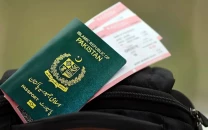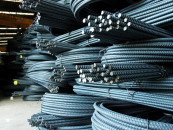Comic relief: Where is the desi superhero?
‘Happily-ever-after’, ‘lost slippers’ may be a thing of the past, but superheroes and super villains are...

Until the next issue, that is.
Comic book characters have mesmerised and inspired readers for years with countless readers finding solace and happiness in the adventures of Batman, Superman, Spiderman and countless other superheroes. It’s not always about heroes and villains either; there have been comics based on science fiction, war, talking animals, crime, romance, horror, teenagers, and many more. Still, when we think of comics we invariably think of superheroes.
The creators of these superheroes are dreamers who combine storytelling and art to create worlds of fantasy that we willingly fall into. They are artists like Frank Miller, Stan Lee, Warren Ellis, Neil Gaiman, Grant Morrison and Alan Moore. They are dreamers that the world needs. They fuel our imaginations and make us believe that good does triumph over evil. Most of the time, anyway.
But does this really matter in Pakistan? Does anyone even read comics here?
The answer is a resounding ‘yes’. Some enthusiasts, like Khalid Cheema, have taken it a step further by turning a hobby into a business. For Cheema, a comic book enthusiast having almost 20,000 comics in his collection, it made sense to turn his life-long passion into profit. Cheema started an online business called Hobby Mutant to introduce and promote comic book culture in Pakistan. Through his Facebook page, he now sells comic books, action figures and posters. He prides himself on offering original products at reasonable prices. The fact that his business is thriving is a testament to how many comic book fans there are out there.
Now here’s the conundrum: given that we have an audience, and given that we have no shortage of creative talent, why haven’t we seen a truly Pakistani comic book hero yet?
We’ve had no shortage of political cartoonists, such as the Maxim, Feica, Rathore, Sabir Nazar, Khalid and Mohammad Zahoor. The serious stuff aside, 1971 saw the appearance of what is possibly our first indigenous comic strip, featuring the polka dot print-loving housewife Gogi. Created by Nigar Nazar, this strip focused on Gogi’s daily adventures, raising awareness on women’s and social issues along the way.
It’s been 41 years since Gogi made her debut, and while there are now many comic strips out there (mostly online), we still haven’t seen a desi incarnation of Captain America or the Hulk. Once again, the question is why?
Ramish Safa, the brains behind the successful webcomic Kachee Goliyan, explains the lack of local comic heroes: “Pakistan has had great superheroes, like Maula Jutt and Umro Ayyar to name a few, but they have left no legacy.”
This might soon be a thing of the past, at least if the guys behind Udham Publications get their way. “When you talk to a kid about superheroes, they talk about Iron Man, Superman and Batman etc. No one talks about local superheroes, unless you count Commander Safeguard as one,” says Danish Ejaz, the COO of Udham’s upcoming comic book starring a hero known as Shamsheer.
“The motivation to make comics began when I started reading Spiderman. I won’t go so far as to say that it taught me responsibility but there was a phase where I hoped I would get bitten by a radioactive spider,” says Salman Nasir, the creative director of Udham Publications and illustrator of Shamsheer.
“We are trying to create a narrative that is essentially Pakistani, a narrative that Pakistanis can own,” says Zakaullah Khan, the writer of Shamsheer and the CEO of Udham. “There’s a deep reflection of our society in the story that we have to tell and the superhero character has a huge part to play in building the identity of the nation,” he adds emphatically. The Udham team was inspired by the Mughal era and incorporated a number of local settings into the comic. “Our goal with the comic is to explore our roots as Pakistanis.” says Zakaullah, “We incorporated modern concepts but also didn’t want to forget where we came from.”
One of the reasons why we still lack a home-grown superhero may be the immense amount of work that goes into creating and marketing one. “We did a good amount of research especially on armour styles, weaponry and war strategies,” says Zakaullah.
Despite having four issues of Shamsheer completed, Creative Director Ejaz insists they complete eight more before they are ready to go public. This is being done to ensure continuity between the comic issues, since they all are linked with one central narrative.
They’re not the only ones with a story to tell. Frustrated with a lack of local superheroes, US-based Pakistani Syed Hamdani has also been toiling at his own creation. Aimed at a younger audience, Sergeant Pakistan is the story of a young army recruit who, while in despair over the country’s condition, is granted superpowers that help him fight evil. “The inspiration for the idea was born out of a news story and a video about young kids in Swat re-enacting how to be suicide bombers. I have a son that age, and that video affected me deeply. So I decided to create something that young children would read and aspire to: a protector of all Pakistanis and a force for good,” says Hamdani.
Without giving too much away, Sergeant Pakistan may soon make his debut right here in one of The Express Tribune’s publications.
While physically printing a comic book may be a tough task, going online is far easier. There, you don’t have to worry about editors, publishers, or advertisers, and online cartoonists are relatively free to explore uncomfortable issues without being bound by any restrictions.
Web comics like Kachee Goliyaan, Mango People, The Secret Achaar Society, Alid Art and HS Comics have become extremely popular online. Most of these comics derive inspiration from everyday experiences which makes them a great medium of expression not only for the artists, but for the audiences as well. What with lawn exhibition billboards to price hikes being mocked, web comics are fast becoming a way to expresses what’s on everyone’s minds. Thanks to social media, some of these comics end up going viral, thus reaching a wide, and very responsive, audience. The nature of the medium also allows for a lot of interaction between the artist and audience, which can lead to new projects.
Only recently Ramish, along with Nofal Khan, the marketer for Kachee Goliyaan, started work on a series of comics based on the responses of their audiences to a set of questions such as: “what are the things that people lie about” and “things that make you sad.”
Still, the greater interactivity also means that creators can come in for instant criticism as well. “The most recent [complaint] that has been levied at us is how we have gotten really mainstream,” says Ramish with disdain. “People don’t really know what they are talking about.”
A number of themes covered in the comics, owing to their sensitive nature, have been taken in an altogether different light, with furious audiences sending hate mail to the comic artists. When asked about getting mixed reviews from the audiences, Toonistan’s Umair Kamal said, “Criticism is a part of life, especially when you have achieved something. You can never really satisfy everyone. I enjoy what my critics say since there’s always room for improvement.”
And then, there are those who lash out at the artists when the content is not perceived to be humorous enough. “There’s this misconception we have that if something happens to be in comic strip format, it’s should make you roll on the floor with laughter,” says Ramish while talking about his Sick in Bed comics that have serious underlying messages. “With Kachee Goliyan, things are pretty simple. We stay clear of politics, Bollywood and religion. Basically, you need to work on the content to make it more understandable. When people don’t get our comics, I fail to see why,” he says.
The people behind The Secret Achaar Society and Alid Art, however, prefer keeping their content humorous as “it has a greater outreach.” Ahmed Hassan of iDraw says, “Comics can be about inspiration and humour or sadness and grief. I choose to make people laugh.” Kamal agrees, saying: “Life is very tough and everyone has their own set of troubles. I believe humour is actually what adds a little zing to our everyday routines.”
It’s those very everyday routines that give Hammad Haroon, the artist who draws comics for The Secret Achaar Society, his inspiration. “The absurdity of life in Pakistan: the traffic, the violence and the constant danger appears to depress a lot of people. What we, in our comics, wanted to do was to allow the society to view it in a satirical way, through humorous takes on the prevailing situation (target chilling instead of target killing, for example).”
Hassan Sohail of HS Comics believes that comics have the power to “make people view things differently,” but sees himself making short videos and animation projects in the long run instead of bringing out a comic book in print.
In fact, of all the ‘online’ comics, Kachee Goliyan seem to be the only ones really interested in making a transition to print. So far, they have four comic books in print, the most recent of which is expected to be distributed to around 10,000 people. With just this one model to learn from, the viability of venturing on the print side of things has so far not been established.
Ventures like Shamsheer and Kachee Goliyan are also exceptions in the sense that these ventures have actually been planned, with a well thought-out marketing strategy in place. “It was never just about art. We have a lot of other comic projects and Kachee Goliyan is just a front. We spent two months planning and strategising. We have already achieved in one year what we didn’t expect to achieve in five,” says a confident Ramish. For these artists, comic production is serious business.
But with Sarcass Stick, iDraw, Alid Art and others, coming out with good content has been the only marketing strategy, and then “things just happened,” as Adil Hussain of Alid Art says. Likewise, Umair Kamal of Toonistan claims, “I never had any plans or strategies. Awesome things always click.”
Comics may be great fun to read, but making them is not all fun and games. It involves a focus on research, strategising and marketing. The timing of uploading them, the content and the language are all factors that influence how well a certain comic is received by the readership.
Most of these comic creators are young adults who have just completed their undergrad studies or are at the beginning of their careers. What with this medium of expression being new and the interest in the field just beginning to blossom, one can safely say that forward is the only way the comic scene will go from here.
Published in The Express Tribune, Sunday Magazine, November 18th, 2012.
Like Express Tribune Magazine on Facebook and follow at @ETribuneMag


















COMMENTS
Comments are moderated and generally will be posted if they are on-topic and not abusive.
For more information, please see our Comments FAQ